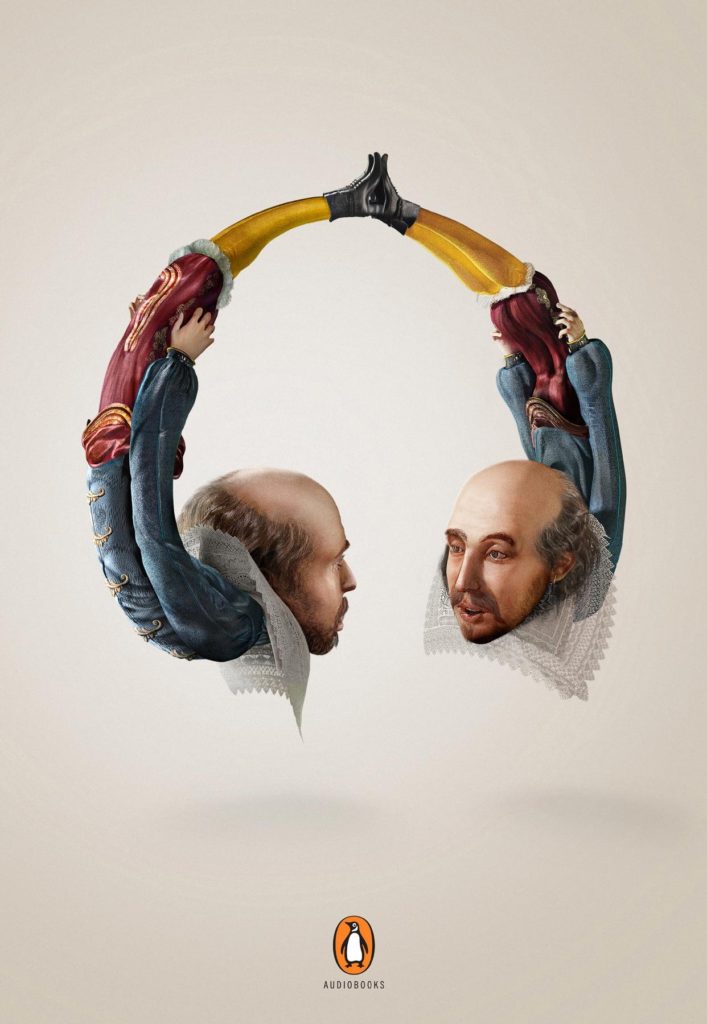The design I chose to analyze was an ad campaign for Penguin Audiobooks in 2013. As an avid fan of surrealist art, seeing a famous writer like William Shakespeare have his entire body contorted and mirrored in order to fashion a pair of headphones, with Shakespeare’s own head serving as the ear cushion, was both unique and a visually enthralling graphic. The first aspect of the design that allows the advertisement to be visually pleasing is the contrast of the writer-headphones with the single color background that surrounds them. In Shakespeare’s case, the beige background accentuates the playwright’s primary color scheme of red pants, a blue shirt, and yellow leggings, which allows the viewer’s eyes to immediately focus on this section in the center of the image. Additionally, the area in between the Shakespeare ear cushions (where a person’s head would normally go if these were actual headphones) is lighter than the rest of the background, which adds to the contrast of the image and allows the viewer to focus on the image’s center for longer. This use of light is another reason for the ad’s visual success as the use of light and shadow of the artwork is able to produce a 3D effect over the design, allowing it a sense of realism in spite of its surrealist concept. This can be seen in Shakespeare’s clothes, which are shaded differently based on their position relative to the work’s light sources, and the use of shadows underneath the headphones, as if they were floating in real life. The last visual aspect that works for this image is the minimal use of texts at the bottom. While Penguin’s orange logo in front of a beige background allows viewer’s to easily recognize the company, the logo itself atop the word “audiobooks” lets readers intuitively figure out that the company behind the ad is Penguin Audiobooks. This is the only use of text in the entire image, which results in the ad’s sense of cohesion and visual hierarchy. This, in conjunction with all the design elements I mentioned before, allows the advertisement to be successful and the headphones to take center-stage as the product being sold to the viewer: audiobooks so clear and vivid that it’s as if the writer themself is reciting the text in your ear.



